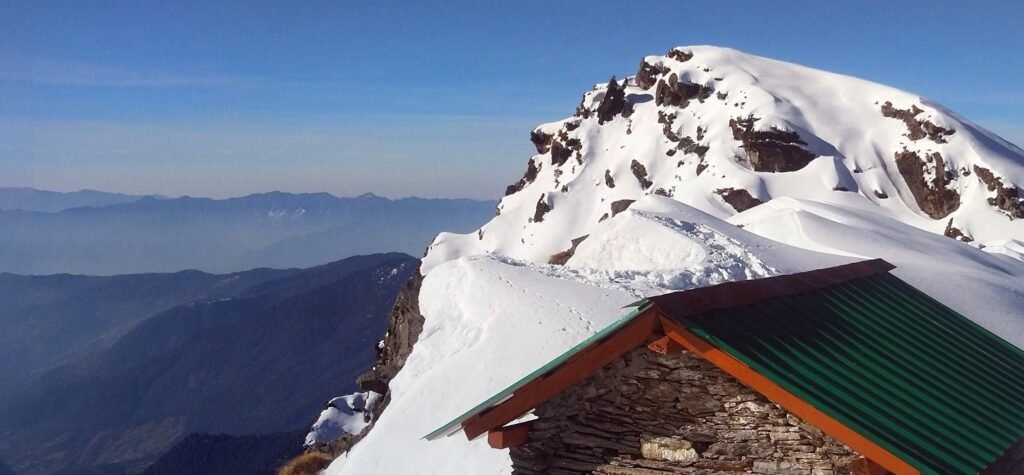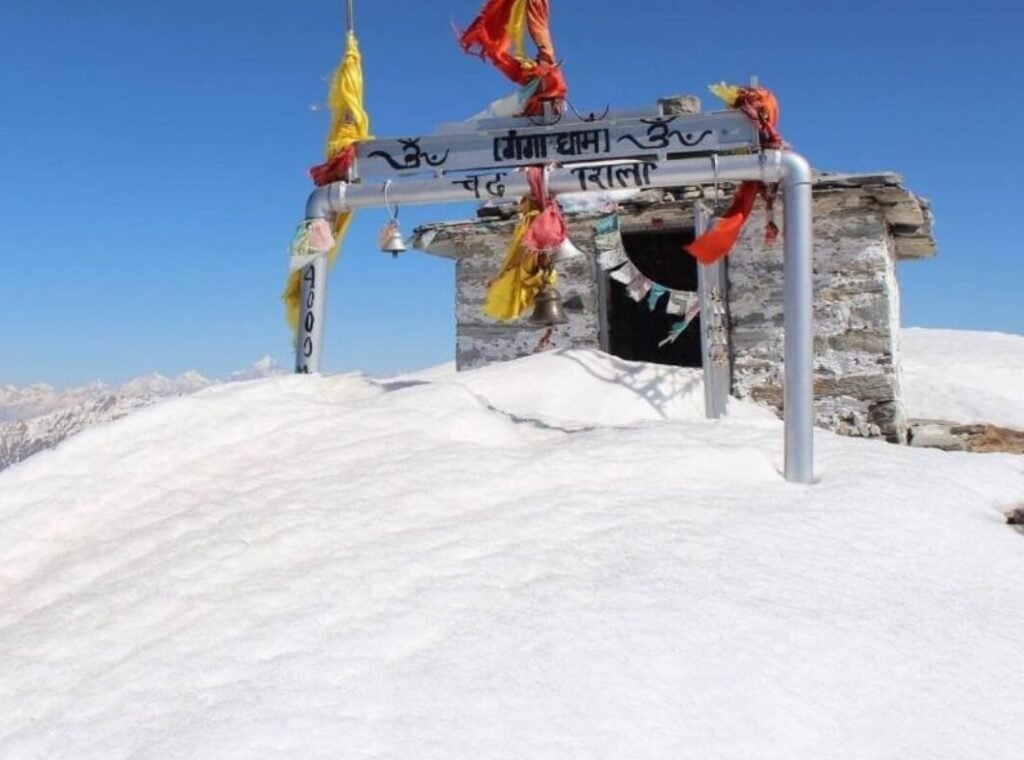Tungnath Trek is not just a trek but an experience filled with beauty of nature, spirituality and clean mountain air in the Himalayas. This trek from the scenic village Chopta to the summit of Chandrashila passing through the highest Shiva Temple in the world is one trek which suits everyone from families to solo travellers, pilgrims and adventure lovers.

Key Details
| Attribute | Details |
| Location | Uttarakhand, India |
| Altitude | Tungnath Temple: 3,680 m; Chandrashila Peak: 3,960 m |
| Trek Distance | Chopta to Tungnath: ~4 km; Chopta to Chandrashila: ~5.5 km |
| Significance | Highest Shiva temple in the world; part of Panch Kedar pilgrimage |
| Economic Impact | Major contributor to local tourism; supports hotels, guides, homestays, and local businesses |
| Heritage/History | Temple dates back over 1,000 years; linked to Mahabharata and Pandava legends |
| Career Highlights | Popular trek for families, spiritual seekers, and trekkers; named one of India’s top easy-moderate treks |
| Family | N/A (trek is not a living being; but accessible for groups, friends, and families) |
Why Choose Tungnath Trek?
- The spiritual significance of Tungnath temple – it is one of the five Panch Kedars. According to legend, this temple was built by the Pandavs. They built the temple to appease Lord Shiva. Also, this temple has a rich history during ancient times. Moreover, the temple has a mention in many ancient religious texts including the Mahabharata. It is also mentioned in the puranas other Hindu mythology texts.
- The trail allows people of all ages easy access due to its clear markings and moderate slope, making it beginner-friendly.
- Outdoorsy Beautifulness surrounded by large bugyal (meadow), forests and blooming (especially rhododendrons in spring).
- Chandrashila top offers a grand panoramic view of the entire Himalayan range including Nanda Devi, Trishul, Kedar dome, and Chaukhamba peaks.
- Tungnath, in its own distinctive way, looks beautiful throughout the year. There are spring flowers, summer coolness, monsoon greens, autumn clarity and winter snow.
Detailed Itinerary
Day 1: Arrival in Chopta
- Route: Drive from Rishikesh (approx. 6-7 hours, 192 km). Chopta welcomes with cool breezes, meadows, and alpine forests.
- Stay: Choose between cozy guesthouses, Swiss camps, and friendly homestays. Advance bookings are recommended, especially during peak seasons.
Day 2: Trek to Tungnath Temple & Chandrashila Summit
- Distance: Chopta to Tungnath (~3.5-4 km); additional 1.5 km to Chandrashila Peak
- Duration: 2.5–4 hours to Tungnath, 1 hour more to Chandrashila
- Trail: A gradual climb through lush forests, opening to alpine meadows. Watch for Monal birds and enjoy small tea stalls (dhabas) on the route.
- Chandrashila Summit: Challenging but short ascent; from here, Himalayan peaks line the horizon.
Day 3: Deoria Tal Excursion
- Deoria Tal: Trek from Sari village (about 2.5 km), featuring a stunning lake with crystal clear reflections of snow-capped mountains, an ideal spot for solitude and photography.
Trail Details & Terrain
- Start Point: Chopta (2,650–2,850m), often called the “Mini Switzerland of India.”
- Tungnath Temple Altitude: 3,680 meters
- Difficulty: Easy to moderate; good for healthy beginners and experienced trekkers alike.
- Key Features: Well-paved paths, rhododendron forests (spring), snow patches (winter), resting dhabas, scenic viewpoints, and a final summit push to Chandrashila.
History and Mythology.
- Tungnath Temple is a thousand-year-old temple constructed by the Pandavas to seek forgiveness from Lord Shiva. Due to the appearance of Shiva’s arm, it was believed to be built here.
- Meditative Richness: The Pandavas, Ravana and even Rama are said to have meditated here.
- Tungnath Temple is one of the Panch Kedars in Uttarakhand and dedicated to Shiva.
When to Go
- Spring (March–May): Rhododendrons in full bloom, comfortable trekking temperatures
- Summer (June): Cool and fresh; clear views, little snow left
- Monsoon (July–September): Green meadows, occasional rain; caution—slippery trails
- Autumn (October–November): Mountain views are sharp and beautiful
- Winter (December–February): Deep snow, frozen silence, temple closed advisable only for experienced snow trekkers
How to Reach
- By Air: Nearest Airport Jollygrant, Dehradun (220 km from Chopta)
- By Rail: Haridwar or Rishikesh railway stations
- By Road: Well-connected via public and private transport; buses/taxis ply regularly from Haridwar/Rishikesh
Accommodation & Food
- Stay Options: Guesthouses, campsites, lodges, and local homestays (with basic amenities)
- Food: Local eateries/dhabas on Chopta Tungnath trail provide tea, Maggi, snacks, and simple meals
- Camping: Allowed in designated spots; enjoy the Himalayan night skies; be sure to book in advance.
Wildlife, Flora & Fauna
Expect encounters with Monal pheasants, snow partridge, musk deer, and if lucky Griffon vultures. The trek is a birdwatchers’ delight in spring. Meadows and forest floors are carpeted with wildflowers, offering a visual treat to nature lovers.
Difficulty & Preparation
- Fitness Level: Basic physical fitness is sufficient; walk/jog regularly prior to the trek
- Health: Altitude is high but not extreme acclimatize a night at Chopta if possible
- Packing Essentials: Trekking shoes, layered clothing, raincoat, sunblock, snacks, water bottle, cap, gloves, first-aid kit
- Safety Tips: Carry identification, inform someone before the trek, avoid overexertion
Responsible Trekking
- Do not litter carry waste down
- Respect local customs and temple rules
- Minimize disturbance to wildlife
- Support local homestays and communities
FAQs about Tungnath Trek
Is Tungnath trek suitable for solo and family groups?
Absolutely. The trail is gentle, facilities are available at Chopta, and many families successfully complete the trek annually.
How long does it take to reach Tungnath from Chopta?
On average, it takes 2.5 to 4 hours from Chopta to Tungnath temple, with another hour for Chandrashila summit.
Is the temple open all year? What happens in winter?
Tungnath Temple opens from late April to November. In winter, the deity is moved to Mukku village, and deep snow makes the trek challenging and unsafe for most.
Do I need special permits or guides?
No special permits are needed. Guides are recommended for beginners but the trail is straightforward and marked.
What’s the best season for this trek?
April to November is ideal, with spring and autumn offering the best conditions and views. Avoid peak winter and heavy monsoon months.
Are food and water available en route?
Yes, dhabas and small stalls serve basic meals and snacks along the path. It’s wise to carry some water and light snacks from Chopta.
Can I camp on the way or at Chopta?
Camping is permitted in designated spots around Chopta and Deoria Tal, with lovely meadow campsites in spring and autumn.
How to avoid altitude sickness?
Acclimatize at Chopta before the trek, hydrate well, and take breaks. If dizziness or headaches develop, descend and consult locals or trek leaders.
What must I pack for the trek?
Good trekking shoes, warm and rainproof clothes, sun protection, first-aid, some snacks, and personal ID.
Final Tips
- Start your trek early for mesmerizing sunrise from Chandrashila.
- Interact with locals, their stories and hospitality enhance the Himalayan charm.
- Keep your camera handy: birds, wildflowers, and peaks offer constant photo ops.
- Take your time soaking in every moment of beauty, spirituality, and peace that Tungnath offers.
